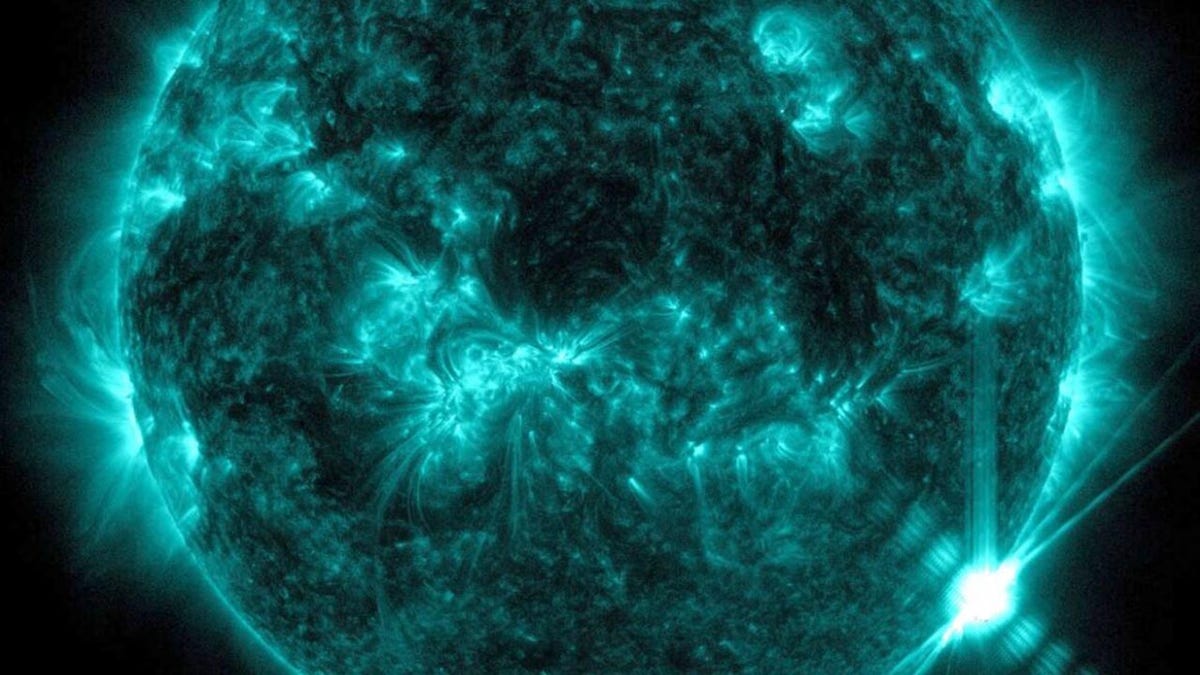Former Astronaut Mike Massimino releases book on his NASA career
Author of ‘Moonshot’ Mike Massimino on his new book and the first public-private partnership launch for NASA
NASA has detected a large grouping of sunspots — dark patches on the sun — known as AR3576, which have increased in size in the last month and could be a risk for strong solar flares.
Solar flares, which are a large burst of energy on the sun's surface, can pose a risk to spacecraft and astronauts and also affect radio communications, electric power grids and navigation signals, according to NASA.
In fact, NASA captured a massive solar flare on Friday at its Solar Dynamics Observatory.
And in December, the largest solar flare in six years — that caused problems with airplane radio communications — occurred, sending a burst of radiation hurtling toward Earth.
EARTH HIT BY LARGE BLAST OF SOLAR DEBRIS FROM THE SUN: NASA

NASA has detected a massive cluster of sunspots that could cause strong solar flares. (NASA)
Magnetic fields for sunspots are thousands of times more powerful than Earth’s.
The space agency first discovered the grouping at the end of last month from NASA’s Perseverance rover on Mars and the cluster is now facing Earth.
Sunspots, which on average are the size of Earth, appear darker than the rest of the sun because they’re cooler and can cause solar flares when magnetic field lines are crossed. Some of AR3576's sunspots are actually larger than Earth.
NASA ANNOUNCES POTENTIALLY HABITABLE ‘SUPER-EARTH’ ONLY 137 LIGHT-YEARS AWAY

NASA's Solar Dynamics Observatory captured a picture of a massive solar flare on Friday. (NASA/SDO)
"Real-time images from NASA’s Solar Dynamics Observatory show an enormous sunspot group moving across the Sun right now!," NASA posted on Friday. "If you have eclipse glasses and good vision, you might be able to see it without magnification. (Never look directly at the Sun without proper eye protection!)"
CLICK HERE TO GET THE FOX NEWS APP
AR3576 is around 93,200 miles long, nearly four times the circumference of Earth.





















